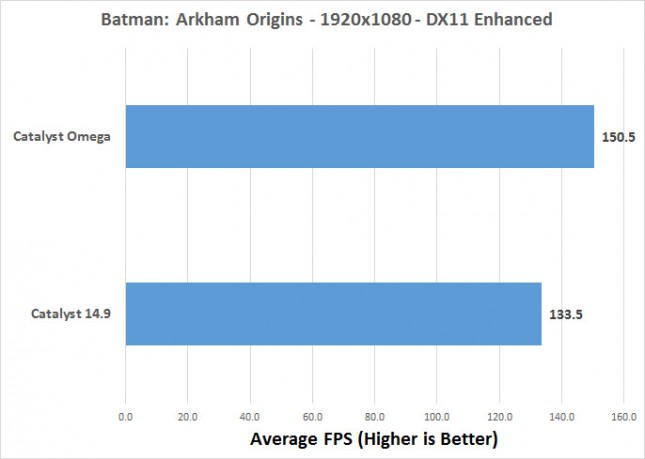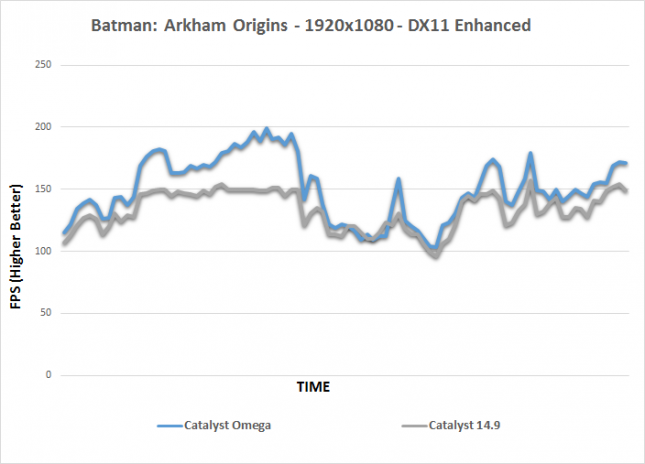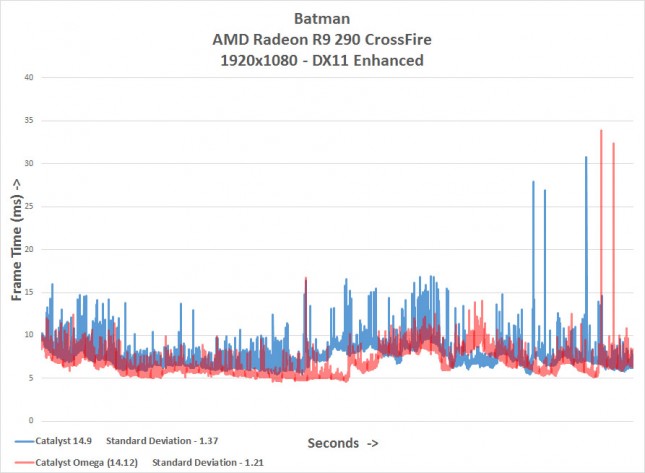AMD Catalyst Omega 14.12 Driver Performance with Frame Times in CrossFire
Batman: Arkham Origins
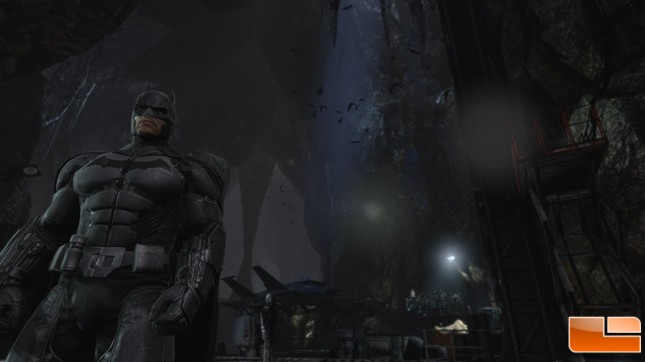
Batman: Arkham Origins is an action-adventure video game developed by Warner Bros. Games Montral. Based on the DC Comics superhero Batman, it follows the 2011 video game Batman: Arkham City and is the third main installment in the Batman: Arkham series. It was released worldwide on October 25, 2013.
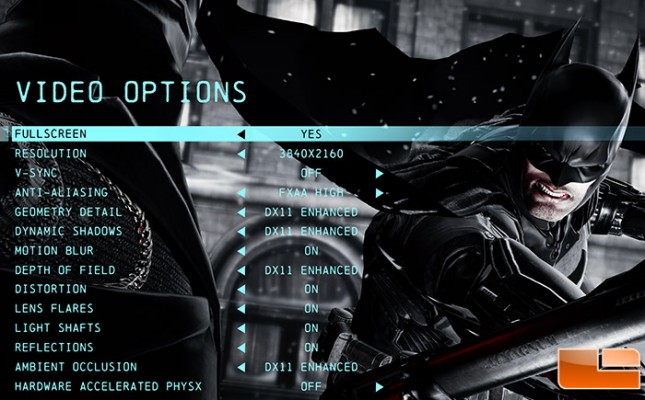
For testing we used DirectX11 Enhanced, FXAA High Anti-Aliasing and with all the bells and whistles turned on. It should be noted that V-Sync was turned off and that NVIDIA’s PhysX software engine was also disabled to ensure both the AMD and NVIDIA graphics cards were rendering the same objects. We manually ran FRAPS on the single player game instead of using the built-in benchmark to be as real world as we possibly could. We ran FRAPS in the Bat Cave, which was one of the only locations that we could easily run FRAPS for a couple minutes and get it somewhat repeatable.
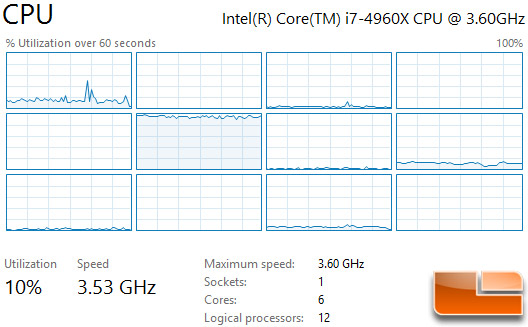
The CPU usage for Batman: Arkham Origins was surprising low with just 10% of the Intel Core i7-4960X being used by this particular game title. You can see that the bulk of the work is being done by one CPU core.
Benchmark Results: The AMD Radeon R9 290 CrossFire setup was able to average 133.5 FPS on Batman: Arkham Origins with Catalyst 14.9 drivers and by installing the latest Catalyst Omega (14.12) drivers we were able to improve that up to 150.5 FPS. This is a solid 13% performance gain from just a driver update and nothing else.
Benchmark Results: When you look at performance over time there is a section of our benchmark run that saw significant improvements, while the rest of the run was pretty similar to the older Catalyst 14.9 drivers.
Benchmark Results: When you look at frame times the key thing you are looking for is how spread apart the numbers are. You can see this by looking at the line charts or by the standard deviation that we calculated and put in the legend on each chart to get a numerical number for how spread out the numbers are. It looks like there was about a 12% improvement in frame times with the Omega drivers, which is excellent as AMD was able to improve performance and smooth out the time it takes to render each frame. Just keep in mind that smaller values indicate a smoother experience and radical increases is bad and usually where micro stutters that people associate to frame pacing happens.

